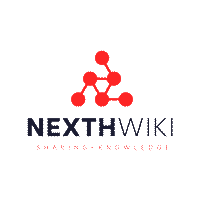Pink Open Market: Difference between revisions
| Line 48: | Line 48: | ||
Citations: | Citations: | ||
[ | [#] https://www.otcmarkets.com | ||
[ | [#] https://www.investopedia.com/articles/fundamental-analysis/08/pink-sheets-ottcb.asp | ||
[ | [#] https://www.investopedia.com/terms/o/otc-pink.asp | ||
[ | [#] https://www.michaelbest.com/portalresource/OTC-Markets-Guide_Michael-Best-Securities-Team | ||
[ | [#] https://en.wikipedia.org/wiki/OTC_Markets_Group | ||
Revision as of 10:13, 23 July 2024
Pink Open Market
The Pink Open Market, formerly known as OTC Pink or "Pink Sheets," is the most speculative tier of the three marketplaces for trading over-the-counter (OTC) stocks operated by the OTC Markets Group. It provides a platform for trading securities that are not listed on major exchanges like the NYSE or NASDAQ[2][3].
Key Features
- Low Barriers to Entry: The Pink Open Market has minimal financial standards and disclosure requirements for listed companies[2][3].
- Diverse Range of Securities: It includes stocks from smaller companies, foreign entities, and firms seeking less regulatory scrutiny[3].
- Electronic Trading: Trades are conducted electronically through broker-dealer networks[2].
- No SEC Registration Requirement: Companies in this market are not mandated to register their stock with the Securities and Exchange Commission (SEC)[3].
Company Categories
The Pink Open Market categorizes companies based on the quantity and timeliness of information they share with investors:
- Pink Current: Companies that submit regular Quarterly and Annual Reports[5].
- Pink Limited: Companies that have submitted information no older than six months[5].
- Expert Market: Companies unwilling or unable to provide disclosure to the public markets (formerly known as Pink No Information)[5].
Risks and Considerations
Investing in the Pink Open Market carries substantial risks due to:
- Limited financial information
- High volatility
- Low liquidity
- Potential for fraud or manipulation[3]
The OTC Markets Group uses warning labels to alert investors of potential risks:
- Caveat Emptor: (Skull and crossbones symbol) Indicates public interest concerns[2].
- Promotion Flag: Signifies awareness of current stock promotion related to the issuer[4].
Recent Developments
The regulatory structure of the Pink Open Market has evolved in recent years:
- Removal of "dark securities" from the market to increase transparency[3].
- Introduction of new disclosure rules in 2020 to enhance market transparency[2].
- Shift of "No Information" securities to the Expert Market, accessible only to broker-dealers and professional investors[2].
Conclusion
The Pink Open Market provides trading opportunities for a wide range of securities not available on major exchanges. However, due to its speculative nature and lower regulatory oversight, it is generally considered suitable only for sophisticated investors with a high risk tolerance[3].
Citations: [#] https://www.otcmarkets.com [#] https://www.investopedia.com/articles/fundamental-analysis/08/pink-sheets-ottcb.asp [#] https://www.investopedia.com/terms/o/otc-pink.asp [#] https://www.michaelbest.com/portalresource/OTC-Markets-Guide_Michael-Best-Securities-Team [#] https://en.wikipedia.org/wiki/OTC_Markets_Group
